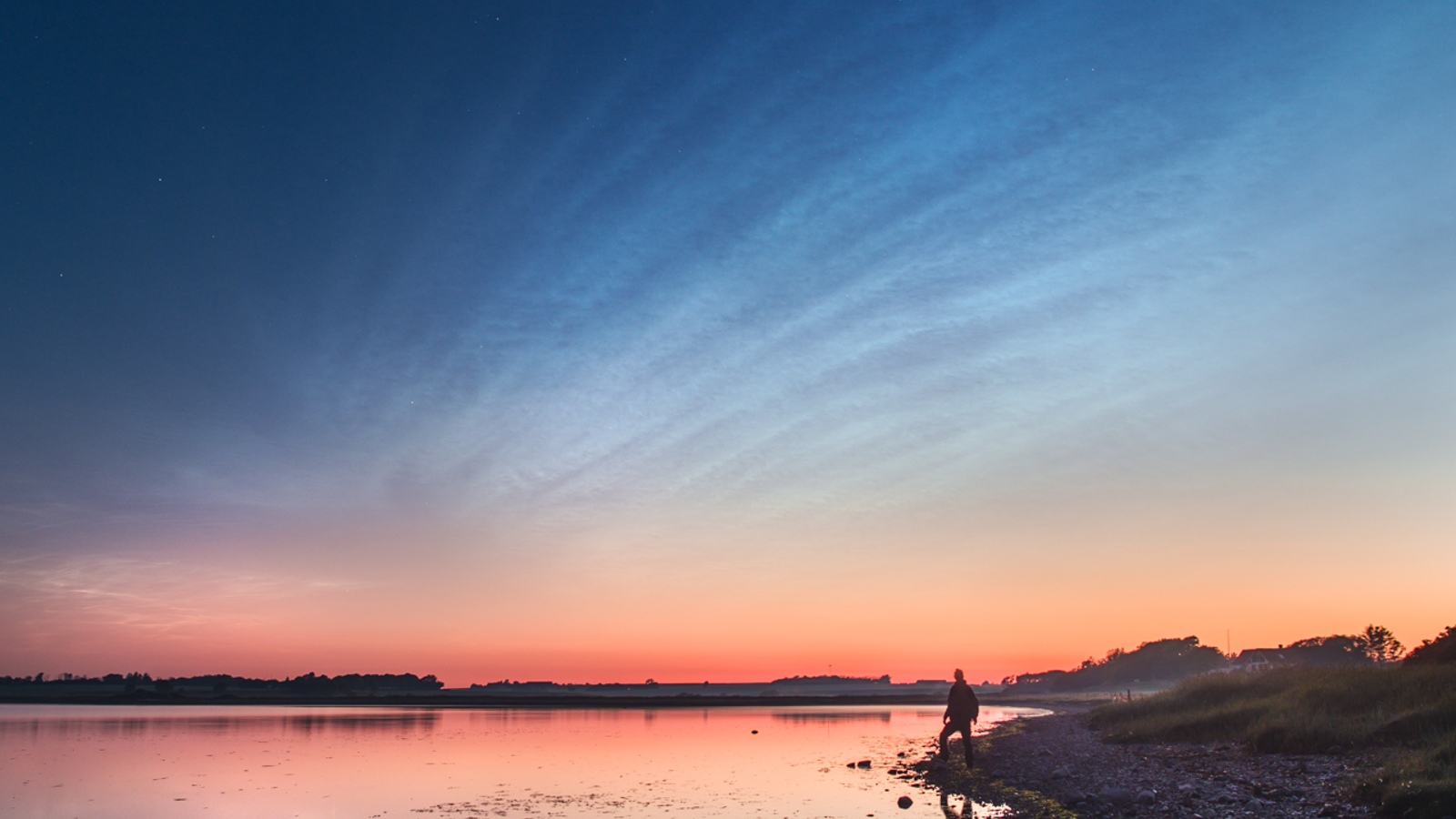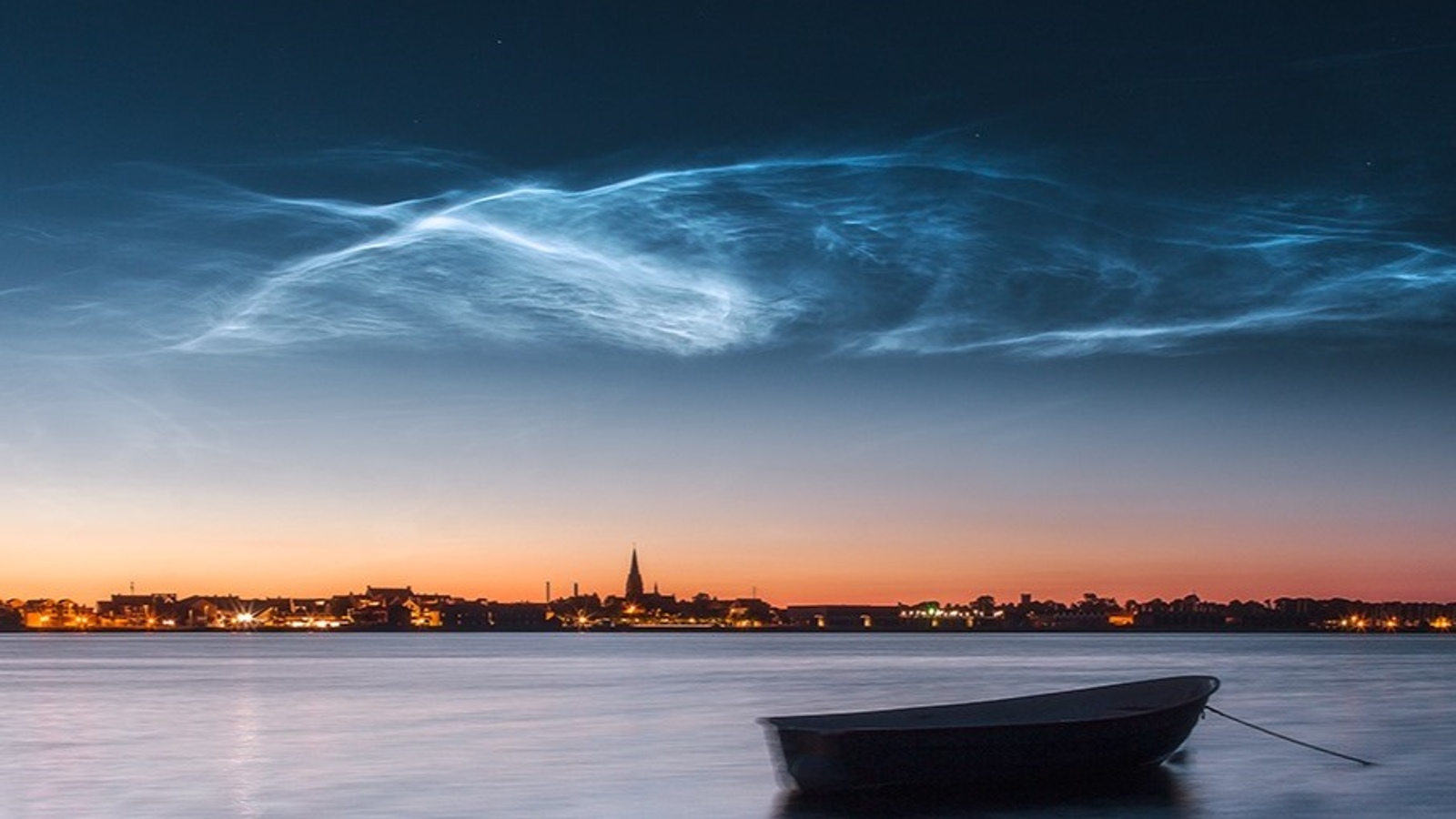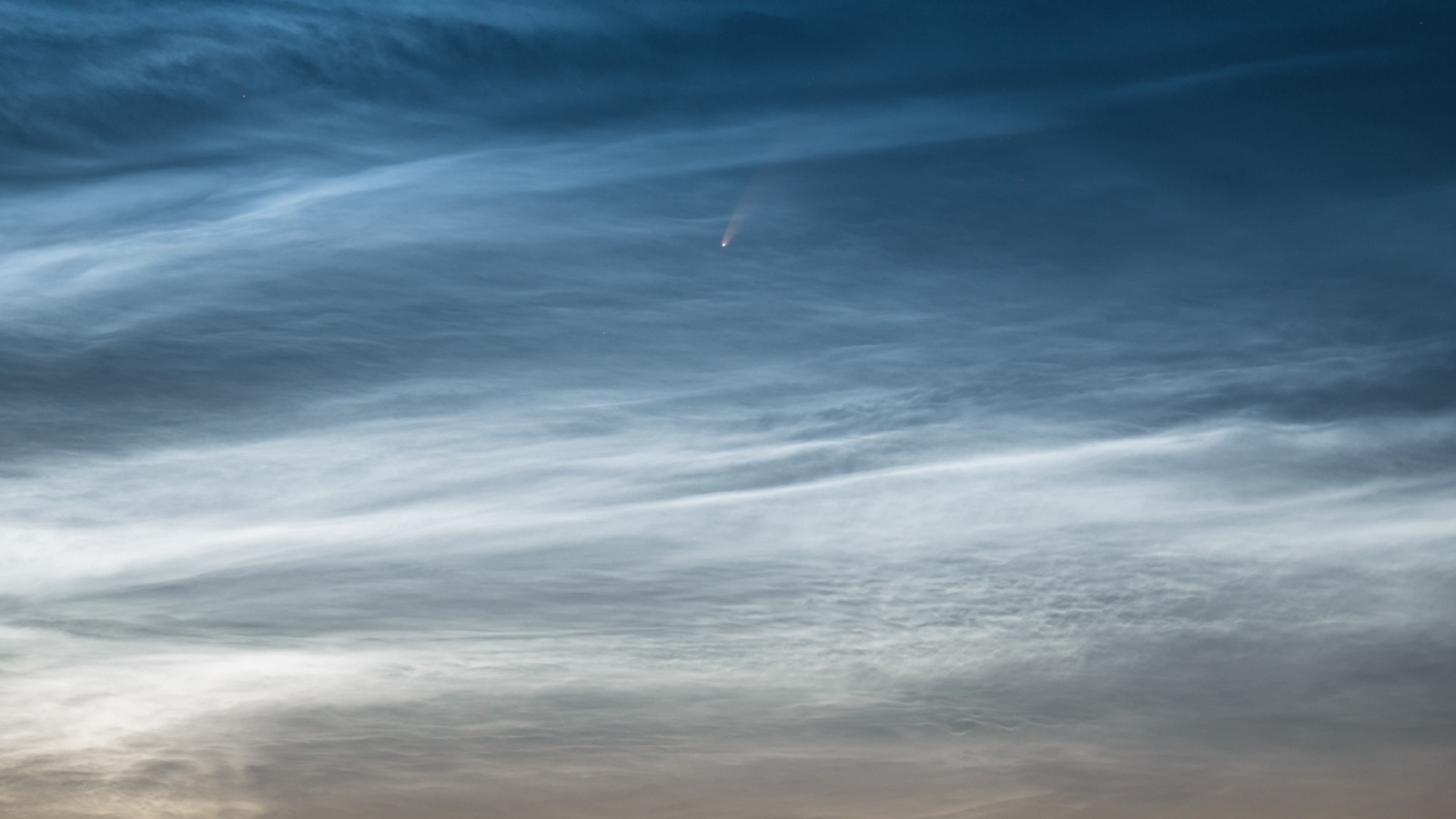Where are the noctilucent clouds we were promised? The sun might be to blame.
Photographers hoping to capture stunning "night-shining" clouds have been left frustrated this year. The fast-approaching solar maximum may be to blame.

A rare type of iridescent, shining cloud that was forecast to become much more common and visible this summer has, so far, failed to live up to the hype — and the increasingly volatile sun may be to blame.
Noctilucent clouds (NLCs), or night-shining clouds, are a type of mesospheric cloud. As the name suggests, mesospheric clouds form in the mesosphere, the third layer of Earth's atmosphere, which stretches between 31 and 50 miles (50 and 80 kilometers) above Earth's surface. NLCs are created when atmospheric water vapor freezes into ice crystals that stick to particles of atmospheric dust left behind by meteor showers and volcanic eruptions.
The colorful clouds — which are normally electric blue but can also be silver, orange or red — typically form near the upper boundary of the mesosphere in latitudes adjacent to polar regions. As a result, they continue to reflect sunlight when the sun is positioned just below the horizon before sunrise or after sunset, which is what makes the clouds shine against the dark sky.
Related: Ultra-rare 'rainbow clouds' light up the Arctic Circle like auroras in stunning new photos

In early June, Live Science reported that the main NLC season — which covers June and July, as well as parts of August — was well underway. Based on the previous year's NLC season, which was the most impressive in 15 years, experts at the time had forecast another strong show this year.
So far, however, NLCs have failed to turn up as frequently or spectacularly as scientists initially predicted, according to Spaceweather.com. The absence of NLCs is likely linked to an increase in solar activity as the sun approaches the explosive peak in its roughly 11-year cycle, which is melting the colorful clouds as they form, experts told Live Science.
Unusually weak NLCs
Astrophotographer Ruslan Merzlyakov has been photographing NLCs near his home in Jutland, Denmark, since 2013. This year, he has been particularly disappointed by the lack of quality shots he has been able to capture.
Sign up for the Live Science daily newsletter now
Get the world’s most fascinating discoveries delivered straight to your inbox.
"Some seasons produce more NLCs than others, but in general, it is possible to experience them almost every night," Merzlyakov told Live Science. "But this year I have only seen them twice," he said, adding that both displays were extremely weak and "nearly not worth photographing."
Unfortunately, the lack of NLCs has coincided with a technical malfunction in NASA's Aeronomy of Ice in the Mesosphere (AIM) satellite, the main device used to monitor NLCs. The spacecraft has been offline since March after its battery overloaded, and it may not fully recharge until next year.

"AIM is the only satellite dedicated to making high-resolution observations of mesospheric clouds," Cora Randall, an atmospheric scientist at the University of Colorado Boulder, told Live Science. "So without AIM, we no longer have the ability to track the clouds and their structure with high precision."
However, ground-based instruments, which collect less-precise data than AIM but still provide a general overview of NLC trends, show that NLCs have been much rarer this year. "The NLC season started relatively late this year, and there have been fewer NLC sightings," Randall confirmed.
Approaching solar maximum
Historically, the appearance of NLCs has been closely tied to the solar cycle. In general, NLCs become more common during the solar minimum, when the sun is at its calmest, than during the solar maximum, when solar activity peaks and solar storms frequently bash into Earth, Randall said.
NLCs are less common during the solar maximum because higher levels of solar radiation warms the upper atmosphere, making it harder for water vapor to freeze, Randall said. The increase in radiation can also destroy water vapor in the atmosphere, meaning there is less vapor to form clouds, she added.

When the current solar cycle began in late 2019, scientists predicted that the solar maximum would likely arrive in 2025 and be comparable to the previous maximum, which was underwhelming compared with past solar peaks. However, Live Science recently reported that the explosive peak could arrive sooner — and be more extreme — than initially expected.
Related: 10 signs the sun is gearing up for its explosive peak — the solar maximum
"I think that the lack of NLCs is a sign that we're approaching solar maximum," Randall said. However, other, unrelated factors — such as atmospheric waves, ripples in the atmosphere that can disrupt cloud formation — could be to blame, she added.
The thermosphere, the atmospheric layer that sits above the mesosphere, has already reached its highest temperature in more than 20 years, which is another strong hint that the solar cycle is fast approaching and is preventing NLCs from forming.
The lack of NLCs has been "very surprising," Merzlyakov said. "Even though I knew that NLCs are highly linked to the solar cycle [and we are approaching the solar maximum], I was still not expecting this season to be this poor."
If the solar maximum is right around the corner, it could limit how many NLCs form in the near future. "I think it is likely that NLC seasons will be weaker than average over the next few years," Randall said.

Harry is a U.K.-based senior staff writer at Live Science. He studied marine biology at the University of Exeter before training to become a journalist. He covers a wide range of topics including space exploration, planetary science, space weather, climate change, animal behavior and paleontology. His recent work on the solar maximum won "best space submission" at the 2024 Aerospace Media Awards and was shortlisted in the "top scoop" category at the NCTJ Awards for Excellence in 2023. He also writes Live Science's weekly Earth from space series.









